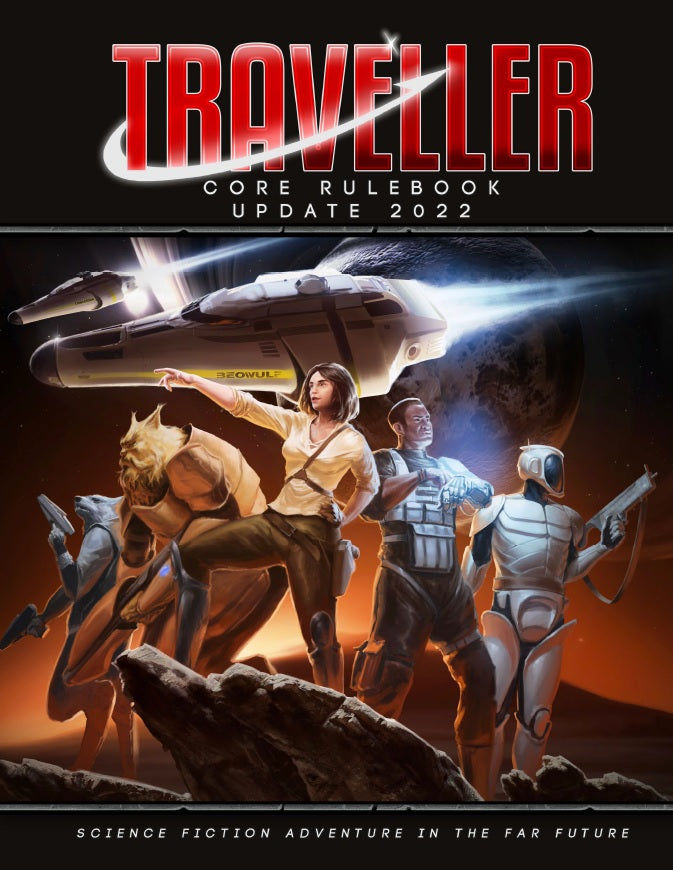Starfinder Science Fiction; Space Opera; Tactical Combat; Character Customization; Team-Based; Exploration-Driven; Innovative Mechanics
Starfinder is a science fantasy tabletop roleplaying game by Paizo Publishing, building upon the Pathfinder system. It blends futuristic technology with familiar fantasy elements, offering players a unique setting for exploration, tactical combat, and character customization. Starfinder differentiates itself through its flexible setting, streamlined rules, and emphasis on interstellar adventure, targeting both veterans of tabletop RPGs and newcomers to the genre. The game's mechanics focus on tactical combat and resource management within a politically complex interstellar landscape.
Theme and Setting
Starfinder's setting is a vibrant and expansive science fantasy universe. Though marketed as science fiction, the game blends those elements with fantasy tropes, creating a setting where magic and technology coexist. The game is set in the far future of the Pathfinder universe after the mysterious disappearance of Golarion, an event known as "The Gap." This event allows the game to retain elements from its fantasy predecessor while establishing its own unique timeline.
The Pact Worlds, a system of allied planets, serves as a central hub for interstellar trade, diplomacy, and exploration. Absalom Station, a massive space station, acts as a focal point for these activities and the base of operations for the Starfinder Society, an organization dedicated to exploring pre-Gap technology and unraveling the mysteries of the lost era. The setting is flexible, accommodating various subgenres of science fiction, from grimdark to cyberpunk, influencing campaigns with elements reminiscent of Dune or Guardians of the Galaxy. This flexibility caters to diverse player preferences, but can be initially overwhelming for newcomers until the core setting concepts are grasped.
Core Mechanics and Rules
Starfinder's core mechanics are built upon the d20 system, similar to the Pathfinder RPG. Players create characters by selecting a race, class, and theme, allowing for significant customization. Combat utilizes a three-action system (standard, move, swift), along with reactions and full actions. A key element is the use of both hit points (HP) and stamina points (SP). Stamina depletes quickly but can be replenished using resolve points, which are also used for class abilities.
Starship combat is a significant aspect, though some find the initial rules repetitive. Character classes are designed to be unique and useful, such as the Solarian and Technomancer. The setting includes both familiar fantasy races and unique alien species, like the reptilian Vesk and rat-like Ysoki. The game provides guidelines for converting content between Pathfinder and Starfinder, further expanding options for players and game masters.
What Makes Starfinder Unique
Starfinder stands out due to its seamless integration of science fiction and fantasy elements within a tabletop RPG framework. Its setting allows for diverse gameplay styles, enabling campaigns that range from galactic rebellions to gritty cyberpunk adventures. The unique races and classes offer distinct character options, while the combination of technology and magic provides a fresh take on traditional RPG mechanics.
The "Gap" storyline offers a compelling narrative hook, allowing for exploration and discovery within the game's lore. The game's official community content marketplace, Starfinder Infinite, empowers creators to develop and sell their own adventures and content, expanding the game's possibilities. Starfinder 2nd Edition aims to enhance compatibility with Pathfinder 2nd Edition, enabling GMs to easily incorporate fantasy elements into their Starfinder games.
Target Audience and Player Experience
Starfinder is geared towards both experienced tabletop RPG players and newcomers seeking a science fantasy adventure. The character creation system is designed to be accessible, offering a variety of races, classes, and themes to suit different playstyles. While the combat system, particularly gun combat, can be initially confusing, it becomes more manageable with experience.
Player experience is generally positive, with many finding the world enjoyable and character creation satisfying. Spellcasting is fun and easy to learn. However, the quality of pre-written adventures can vary, and some game masters may need to tweak certain rules to improve balance. Overall, Starfinder provides a flexible and engaging experience for those interested in exploring a universe where technology and magic collide.



